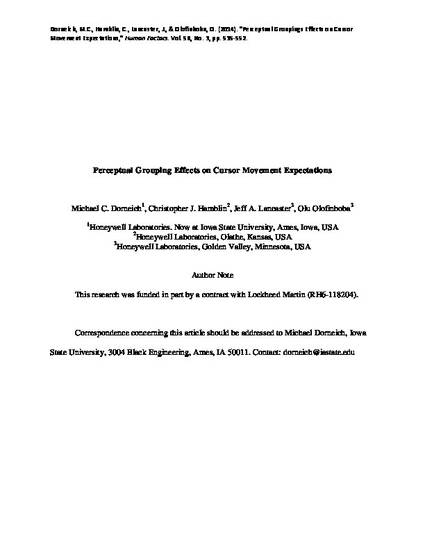
Objective: Two studies were conducted to develop an understanding of factors that drive user expectations when navigating between discrete elements on a display via a limited degree-of-freedom cursor control device. Background: For the Orion Crew Exploration Vehicle spacecraft, a free-floating cursor with a graphical user interface (GUI) would require an unachievable level of accuracy due to expected acceleration and vibration conditions during dynamic phases of flight. Therefore, Orion program proposed using a "caged" cursor to "jump" from one controllable element (node) on the GUI to another. However, nodes are not likely to be arranged on a rectilinear grid, and so movements between nodes are not obvious. Method: Proximity between nodes, direction of nodes relative to each other, and context features may all contribute to user cursor movement expectations. In an initial study, we examined user expectations based on the nodes themselves. In a second study, we examined the effect of context features on user expectations. Results: The studies established that perceptual grouping effects influence expectations to varying degrees. Based on these results, a simple rule set was developed to support users in building a straightforward mental model that closely matches their natural expectations for cursor movement. Conclusion: The results will help designers of display formats take advantage of the natural context- driven cursor movement expectations of users to reduce navigation errors, increase usability, and decrease access time. Application: The rules set and guidelines tie theory to practice and can be applied in environments where vibration or acceleration are significant, including spacecraft, aircraft, and automobiles.
Available at: http://works.bepress.com/michael_dorneich/32/

This is a manuscript of an article from Human Factors 56 (2014): doi: 10.1177/0018720813500692. Posted with permission.